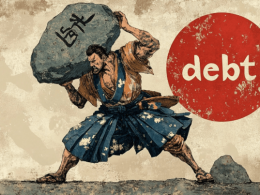Industrials: Marketperform
Economic growth continues, with manufacturing seeming to lead the way, as evidenced by a solid reading for the ISM manufacturing index. However, the most-recent industrial production reading was disappointing, helping reinforce our belief that we're in a soft patch of the economic recovery that will result in the industrial sector performing more in line with the overall market. In fact, we've already started to see the ISM manufacturing index stabilize after the spike that followed the depths of the recession and we’ve seen some disappointing regional manufacturing surveys, which has caused further consternation in the industrial sector.
Also tempering our view of the group is the fact that fiscal austerity measures are being put into place, which could dampen growth in the industrials arena. However, potentially offsetting some of that in the near term, central banks are again moving toward more-accommodative policies. Additionally, the new orders/inventory ratio is starting to roll over, typically a negative sign for the industrials group, and we're watching the path of that ratio carefully.
Having said that, we're not overly negative on the group, as both China and the United States—along with many other countries—have targeted infrastructure projects as a major recipient of stimulus funds that have yet to be fully spent. Recently, President Obama suggested a new round of infrastructure spending, and although we think it has virtually no chance of being passed in the heart of the election season, it does show where governments are looking to stimulate. We also believe that, as a result of tight purse strings in corporate offices during the past year, companies are at the point where they need to start replacing and updating equipment—potentially benefitting the industrials sector.
Clients can see our top-rated stocks in the industrials sector.
Positive factors for industrials:
- Corporate balance sheets remain relatively cash rich, which could help push management to invest in new, more-efficient equipment to help offset production losses due to layoffs.
- Lending standards, while still tight, have started to loosen, which should help boost capital spending.
- Business confidence among large companies is improving, typically a good leading indicator of future equipment expenditures.
- Inventories in much of the manufacturing area are extremely low, leading to the possibility of a demand-inspired rebuilding phase.
- Government is still targeting infrastructure for increased spending, which could benefit the industrial sector.
Negative factors for industrials:
- Small business confidence remains low, likely resulting in less capital spending in the near term.
- Access to credit remains limited in many cases—among smaller businesses, for example—which dampens spending plans.
- New orders appear to be rolling over while inventories are rising, which could hurt profitability in the group.
Information technology: Outperform
After a bit of a rocky patch for the technology sector, we’ve seen the group again start to outperform during the past month. With a couple of questionable acquisition deals and some issues in the boardrooms of a couple of companies, concern was growing about the stability of the tech group. But we believed those were temporary issues. With large cash balances, increasing dividend payments, solid management and tight inventory controls, the tech sector is far more stable than it was in the late 1990s environment that so many still remember.
We've been touting this stability as one of the reasons to stick with the group despite the increased volatility in the market. We believe those who remained invested in tech will be rewarded with outperformance in the coming months, especially as the market bounces back from occasional oversold levels as we've seen over the past month.
The fundamentals of the group also appeal to us. Companies that have underinvested in capital improvements during the past couple of years appear to be starting to loosen their purse strings, and will likely look to tech as a place to invest first. Such investments are typically attractive because they tend to increase companies' efficiency and productivity at all levels.
As a result, companies can produce more with fewer workers—as we're seeing with relatively high productivity numbers but still-high unemployment readings—which allows them to cut back on costs and potentially expand margins.
Additionally, balance sheets in the sector are solid, with large cash balances and relatively low debt. This enables the group to increase dividends and pursue mergers and acquisitions that might help performance. We believe this also helps provide stability to the group, which in turn gives it a certain level of defensiveness, contrary to its high-beta history.
Clients can see our top-rated stocks in the information technology sector.
Positive factors for information technology:
- Growth in business investment in technology is now outpacing growth in total business investment.
- Real tech investment has been below trend for several years, which could bode well for the future of the sector as spending returns to more normal levels.
- Retail sales in electronics and appliance stores have been rising rapidly as a percentage of total sales.
- We're starting to see banks loosen lending standards, which could slowly help revive capital investments.
- New computer orders have spiked, while inventories remain anemic.
Negative factors for information technology:
- Increasing global competition, especially in areas with low labor costs, will likely continue to compress profit margins.
- Should economic conditions deteriorate, spending on capital projects would likely fall.
- We see signs that companies remain hesitant to increase capital spending.
- Governments are reining in spending, which could dampen investment in technology-related projects.













